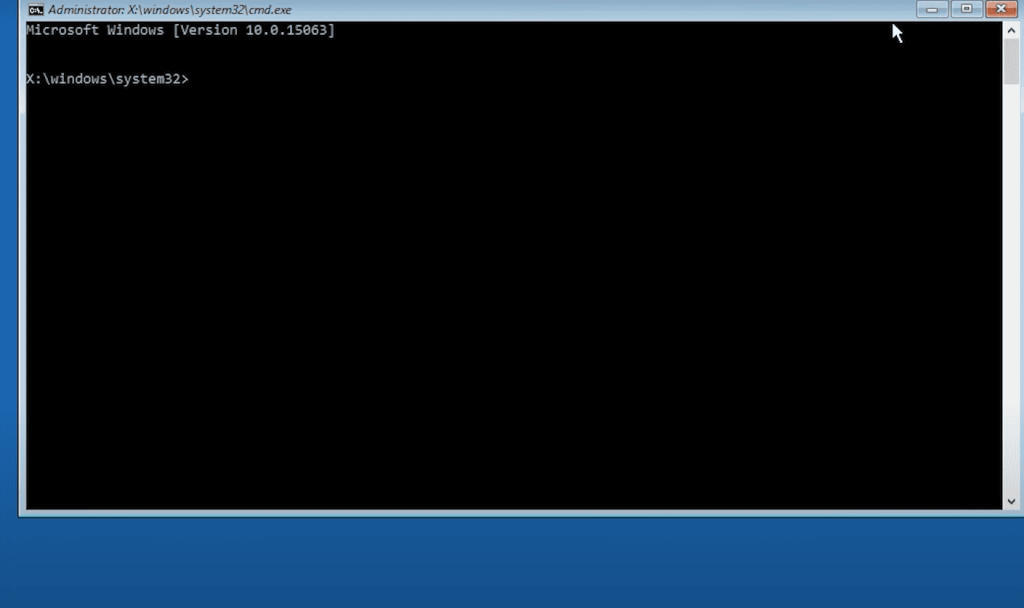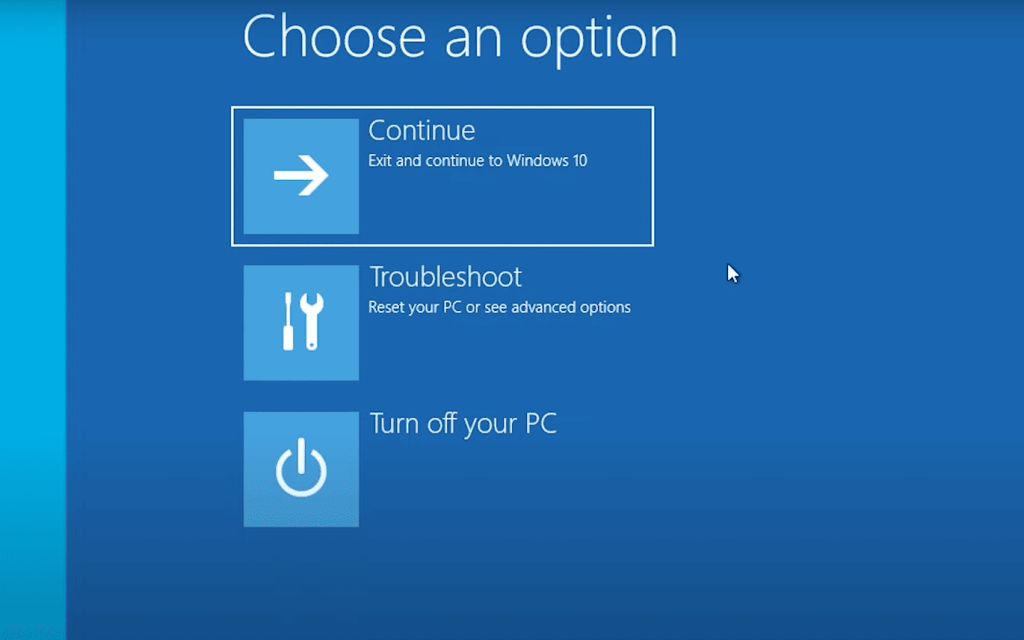Imagine turning on your computer only to face a glaring message: “Your PC needs to be repaired.” For millions of Americans, this sudden system crash isn’t hypothetical – it’s the reality of encountering a stubborn boot issue that locks them out of their devices. While this problem might feel isolating, it’s more common than most users realize.
These startup failures often strike after routine updates or new hardware installations. Your machine might show a black or blue screen with cryptic alerts about inaccessible devices. The good news? What looks like a digital disaster is usually fixable with the right approach.
This guide walks you through practical solutions that don’t require technical expertise. We’ll explore why these crashes happen, how to protect your files during repairs, and step-by-step methods to get your system running smoothly again. Whether you’re dealing with a recent Windows update gone wrong or mysterious driver conflicts, relief is closer than you think.
Key Takeaways
- Boot failures often follow system updates or new hardware additions
- Warning messages may reference device accessibility issues
- Multiple repair strategies exist for different skill levels
- Immediate action reduces data loss risks
- Most solutions don’t require installation discs
- Preventive measures can avoid future occurrences
Introduction and Overview
When your Windows computer suddenly halts during startup, it’s often due to corrupted system files controlling the boot process. The Boot Configuration Data (BCD) acts like a roadmap for your operating system – if it gets damaged or misplaced, your device can’t navigate to the login screen.

Root Cause of Startup Hiccups
This specific boot failure occurs when critical startup instructions become unreadable. Common triggers include interrupted updates, incompatible drivers, or sudden power loss during system changes. Unlike general crashes, this issue specifically targets the files that tell your computer how to wake up properly.
Recognizing the Warning Signs
You’ll typically encounter one of these alerts on a blue or black background:
| Message | Visual Clue | Common Trigger |
|---|---|---|
| “Your PC needs repair” | Blue screen with QR code | Recent Windows update |
| “A required device isn’t connected” | Black screen with white text | New hardware installation |
| “Windows failed to start” | Text-only error screen | Corrupted system files |
These warnings might reference missing devices even when all hardware is connected. The confusion happens because Windows misreads storage drives as unavailable when key boot files go missing. Most users report these issues within 48 hours of system changes, making recent activity clues vital for troubleshooting.
Understanding error code 0xc00000f: Causes and Implications
What makes your computer refuse to start properly? Several common culprits disrupt the delicate startup sequence. Let’s explore why your system might be struggling to launch and what these issues mean for your device’s health.
When Critical Startup Files Get Damaged
The Boot Configuration Data (BCD) acts like your computer’s launch checklist. If this small database gets corrupted – perhaps from an interrupted update – your Windows system can’t find its starting instructions. Even minor file damage here creates major roadblocks.
System files work like traffic directors during startup. When they become compromised, your machine might misinterpret healthy hardware as faulty. This explains why you’ll see warnings about missing devices when everything’s physically connected.
Hardware Conflicts and Unstable Components
Newly installed devices often bring unexpected drama. Updated drivers might argue with existing software, while aging hard drives develop communication issues. Loose cables or failing memory sticks can trick your system into thinking components vanished.
Storage devices showing early failure signs frequently trigger these startup struggles. “Many users don’t realize their drive’s health affects boot reliability until it’s too late,” notes a Microsoft support specialist.
Environmental Threats and Power Problems
Malware infections sometimes target startup files deliberately. More commonly, sudden power outages interrupt crucial system updates. Both scenarios leave critical boot files incomplete or scrambled.
Less obvious issues like damaged SATA cables create intermittent problems. These might appear randomly, making diagnosis trickier. Regular backups become essential when dealing with such unpredictable failures.
Utilizing Windows Recovery Tools
When your computer refuses to start normally, Windows provides hidden lifelines most users never explore. The Recovery Environment houses specialized utilities designed to troubleshoot boot problems without requiring technical expertise.

Performing Startup Repair via Windows Recovery Environment
Accessing these tools depends on your situation. If you can’t reach the login screen:
- Insert a USB installation drive or DVD
- Restart your device 3 times rapidly during failed boot attempts
Once in the blue recovery menu, select Startup Repair. This automated tool scans for missing system files and registry errors. “It’s like having a mechanic inspect your car’s engine while it’s still running,” explains a Dell support technician.
Leveraging Automatic Repair Options
For deeper issues, choose Automatic Repair from the same menu. This comprehensive scan checks hardware compatibility and driver conflicts while repairing multiple system components. Most processes finish within 15-45 minutes.
| Feature | Startup Repair | Automatic Repair |
|---|---|---|
| Best For | Quick fixes | Complex issues |
| Time Required | 5-15 minutes | 15-45 minutes |
| User Action Needed | None | Follow prompts |
Both options preserve personal files while working. If one method fails, try the other – their repair strategies complement each other perfectly.
Command Prompt Solutions for Troubleshooting
When graphical tools fall short, Windows’ text-based interface becomes your secret weapon. The Command Prompt offers precise control over system repairs – if you know how to wield it properly. Let’s explore two powerful utilities that can resurrect your computer’s startup sequence.
Using Bootrec.exe to Repair MBR and Rebuild BCD
Access the Command Prompt through Windows Recovery Environment. Type these commands in order:
- bootrec /fixmbr – Repairs the Master Boot Record
- bootrec /fixboot – Rewrites the boot sector
- bootrec /rebuildbcd – Reconstructs the Boot Configuration Data
“This sequence works like a three-step CPR for your system’s startup heart,” explains a Microsoft-certified technician. Always wait for confirmation messages between commands – rushing can cause incomplete repairs.
Running CHKDSK to Fix Disk Errors
Storage issues often hide beneath surface-level symptoms. Type chkdsk C: /f (replace C with your system drive letter) to scan for file system corruption. This utility checks for:
- Bad sectors
- Cross-linked files
- Directory errors
Allow the scan to complete fully – interrupting could worsen disk issues. Successful repairs typically show “Windows has scanned the file system and found no problems” in green text.
Additional Fixes and Advanced Settings Adjustments
When standard fixes don’t work, deeper solutions become essential. These advanced methods help tackle stubborn startup problems while giving you control over your system’s core functions. Let’s explore two powerful approaches that often resolve persistent issues.
Resetting Your PC and Reinstalling Windows
Windows 10/11 offers a built-in reset option that acts like a fresh start. Choose between keeping personal files or wiping everything – ideal when multiple repair attempts fail. “This process reinstalls Windows without needing installation media,” explains a Microsoft support guide.
For complete reinstalls, create a USB installer using Microsoft’s Media Creation Tool. Back up critical data first, as this method formats your drive. Most modern systems handle this process in under an hour if hardware functions properly.

Adjusting BIOS Settings and Disabling Secure Boot
Access your computer’s BIOS by pressing F2, Del, or other manufacturer-specific keys during startup. Look for “Load Defaults” to reset configurations – often fixes unrecognized storage devices.
Secure Boot sometimes blocks recovery tools. Navigate to BIOS’ Security tab and switch this setting to “Disabled”. Document original settings first using phone photos. Changes here affect how your system interacts with hardware and software.
| BIOS Key | Brand | Common Use |
|---|---|---|
| F2/Del | Dell/HP | Mainstream computers |
| Esc/F10 | Lenovo | Business devices |
| F12 | ASUS | Gaming systems |
Preventive Measures and Data Recovery Strategies
Your digital life depends on reliable access to files and applications. While boot issues can disrupt workflows, smart preparation minimizes downtime and protects your information. Let’s explore how to shield your system while maintaining quick recovery options.
Building Your Digital Safety Net
Automated backups act as insurance against unexpected crashes. Use Windows’ built-in File History or third-party tools like EaseUS Todo Backup for scheduled copies to external drives or cloud storage. “Daily incremental backups preserve changes without hogging storage space,” advises a Western Digital engineer.
For critical systems, consider these backup tiers:
- Local snapshots (external drives)
- Cloud storage (Google Drive, OneDrive)
- Disk imaging (Macrium Reflect)
Smart Maintenance Habits
Prevent boot conflicts with these proactive steps:
- Update drivers monthly through Device Manager
- Run weekly antivirus scans
- Clean temporary files using Disk Cleanup
Professional recovery software like Stellar Data Recovery excels when systems won’t start. Create bootable USB versions for emergency access – their 99.7% success rate makes them worth keeping handy.
| Tool Type | Best For | Frequency |
|---|---|---|
| System Restore | Configuration errors | Before updates |
| CHKDSK | Storage health | Monthly |
| S.M.A.R.T. checks | Drive failure alerts | Biweekly |
Keep your recovery drive updated with current Windows versions. Pair these strategies with proper shutdown routines to maintain system integrity during power fluctuations.

Conclusion
Booting issues don’t have to spell disaster for your Windows system. By following the step-by-step solutions outlined here – from automated repairs to manual BCD fixes – you can restore normal startup operations efficiently. Remember, starting with simpler tools like Startup Repair often resolves the problem without needing advanced skills.
For persistent cases, combining Command Prompt commands with BIOS adjustments creates multiple pathways to success. Always prioritize data protection during troubleshooting – professional recovery software can salvage files if unexpected issues arise.
Bookmark this guide as your go-to reference for resolving startup challenges. Share these proven methods with others facing similar roadblocks. With regular maintenance and the strategies covered, you’ll handle future system hiccups confidently while minimizing downtime.

